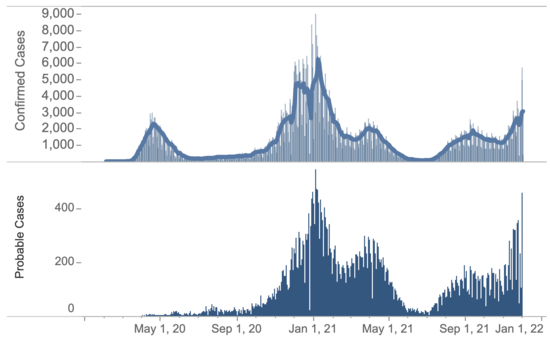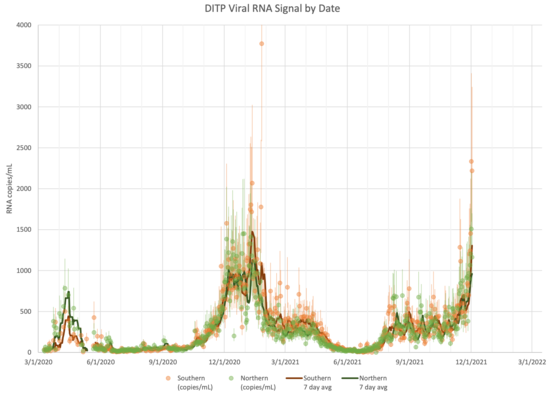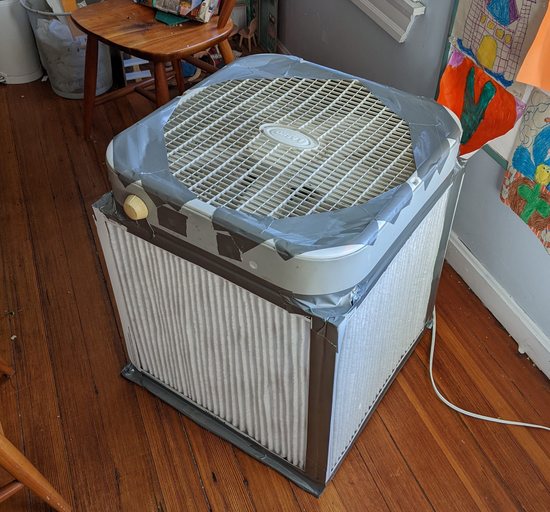Every year, my extended family gets together for Christmas. Several days of lots of people in the same place, eating, playing games, making music, and generally spending time together. We skipped last year, because of covid, and are thinking about what makes sense to do this year.
If rates had stayed at about the same level they had been at since September, I think we would have been happy to get together more or less as normal. With everyone 5+ fully vaccinated, and most adults boosted, the risk seemed relatively low. But rates have gone up substantially here, especially in the last few days:
We know this isn't just a post-Thanksgiving data issue, because we also see it in the sewage:
This is changing quickly, and in the 2-3 weeks between now and when we'd be getting together there's a lot of time for rates to go up further or not.
With this much uncertainty, I think it makes the most sense to plan by preparing options. This is a bit similar to the thinking a month ago on making dance events safer, but it's a smaller group of people with much higher trust.
I think air purifiers make a lot of sense here, and box-fan cubes give you a lot of filtration cheaply and simply:
(I'm considering putting a second cube on top to get five more filters per fan, which would also make it quieter.)
Each 12-pack is $80 shipped, so the cube is $27 plus a box fan ($20, or you may have one) and some tape. Per microcovid, one in each room cuts risk by ~3/4. Opening windows is also a good idea if you have a heating system that can keep up (my dad's house does; ours does not).
Since this is the same group of people getting together over a few days, spending a lot of time together each visit, I think rapid tests also make sense. They're down to $7/each, and while they do have some false negatives, they probably cut risk by ~3/4 if you do them at the beginning of each visit.
If people wore decent (surgical+) masks the whole time, microcovid has this as cutting risk by ~7/8. If people took them off to snack, and are snacking ~10% of the time, then it's ~4/5 instead. [1] I think large group dinners with people packed very close together, are not a great idea. (Our family usually sits close enough at these meals that chairs are too wide we need to set some boards across chairs to make benches.) If we decided not to wear masks most of the time, it would likely still make sense to put them on for singing (since singing is ~5x riskier than talking).
Rapid tests and filters are things we might not be able to get easily closer to the time, so I've bought a bunch now to keep options open. If we decide not to use them for this we'll use them for other things this winter.
[1] If everyone snacks the same 10% of the time then it's 10% *
1 + 90% * 1/4 * 1/2 or 21%. If people each snack randomly then
it's (10% * 1 + 90% * 1/4) * (10% * 1 + 90% * 1/2) or
18%. Not much difference.


